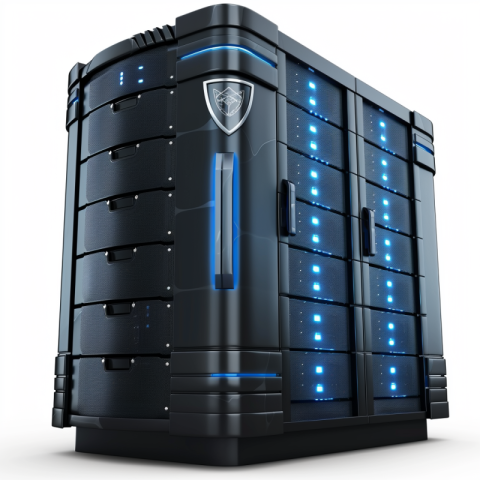











Understanding Server Technology: Types, Functions & Best Practices
Servers are the backbone of the internet and modern computing. They are powerful computers that provide data to other computers, known as "clients," over a network. Understanding server technology is crucial in today's digital age, whether you're a business owner, IT professional, or just a curious individual. This guide will delve into the intricacies of server technology, covering their types, functions, and best practices.
What is a Server?
A server is a computer program or a device that provides functionality for other programs or devices, called "clients." This architecture is called the client-server model. A single server can serve multiple clients, and a single client can use multiple servers.
How Servers Work
- Client Request: A client device, like your computer or smartphone, sends a request to the server. This could be anything from loading a webpage to accessing a file.
- Server Processes Request: The server receives the request and processes it. This involves retrieving the requested data or performing the requested action.
- Server Sends Response: The server sends a response back to the client, providing the requested data or confirming the action.
Types of Servers
There are many different types of servers, each designed for a specific purpose:
- Web Servers: Store and deliver web pages. Popular examples include Apache, Nginx, and IIS. They handle HTTP requests from web browsers and send back the requested HTML, CSS, and JavaScript files. They are vital for website hosting. Web servers are fundamental for internet browsing experience
- File Servers: Store and manage files centrally. They allow multiple users to access and share files over a network. Common protocols used include SMB (Server Message Block) for Windows and NFS (Network File System) for Linux/Unix. File servers are often utilized in office environments
- Database Servers: Manage and provide access to databases. They handle queries, data storage, and retrieval. Popular database servers include MySQL, PostgreSQL, Oracle, and Microsoft SQL Server. They are important for applications that need to store and manage large amounts of data. Database servers ensure data integrity and security.
- Mail Servers: Handle the sending and receiving of emails. They use protocols like SMTP (Simple Mail Transfer Protocol), POP3 (Post Office Protocol version 3), and IMAP (Internet Message Access Protocol). Popular examples are Microsoft Exchange, Exim, and Postfix. Mail servers are vital for communication
- Application Servers: Run application logic and provide access to applications. They handle the execution of application code and provide services like transaction management and security. Examples include JBoss, WebSphere, and Tomcat. These types of servers are important for enterprise applications.
- Game Servers: Host online games and manage the interactions between players. They handle game state, player connections, and real-time data synchronization. Examples are Steam and Origin. Game servers are utilized for multiplayer online games.
- Print Servers: Manage and distribute printing tasks across a network. They allow multiple users to share printers efficiently.
- Proxy Servers: Act as an intermediary between clients and other servers. They can improve performance, security, and anonymity by caching data, filtering requests, and hiding the client's IP address.
- DNS Servers: Translate domain names into IP addresses. They are crucial for web browsing, allowing users to access websites using human-readable names instead of numerical IP addresses.
- Virtual Servers: Multiple virtual servers can run on a single physical server. This is achieved through virtualization technology, allowing for efficient use of hardware resources. Virtual servers enhance server flexibility and scalability
Key Functions of Servers
- Data Storage and Retrieval: Servers store vast amounts of data and provide access to it as needed.
- Resource Sharing: They enable the sharing of resources like printers, files, and applications across a network.
- Application Hosting: They host and run applications, making them accessible to multiple users.
- Centralized Management: Servers allow for centralized management of data, applications, and users, making administration easier.
- Security: They provide security features like authentication, authorization, and encryption to protect data and resources.
Best Practices for Server Management
- Regular Updates: Keep the server operating system, applications, and security software up to date to patch vulnerabilities.
- Strong Passwords: Use strong, unique passwords for all server accounts.
- Firewall Configuration: Configure a firewall to block unauthorized access to the server.
- Monitoring: Monitor server performance, resource usage, and security logs to identify and address potential issues.
- Backup and Recovery: Regularly back up server data and have a disaster recovery plan in place.
- Access Control: Implement strict access control policies to limit who can access the server and what they can do.
- Redundancy: Use redundant hardware and network connections to ensure high availability.
- Virtualization: Utilize virtualization technology to improve resource utilization and flexibility.
- Load Balancing: Distribute network traffic across multiple servers to improve performance and availability.
- Security Audits: Conduct regular security audits to identify and address potential vulnerabilities.
The Future of Servers
The future of servers is likely to be dominated by trends such as:
- Cloud Computing: Cloud-based servers are becoming increasingly popular due to their scalability, flexibility, and cost-effectiveness.
- Edge Computing: Bringing computation and data storage closer to the devices where it's being gathered, rather than relying on a central location.
- Serverless Computing: A cloud computing execution model where the cloud provider dynamically manages the allocation and provisioning of servers.
Conclusion
Servers are a critical component of modern computing, enabling everything from web browsing to online gaming. Understanding the different types of servers, their functions, and best practices for management is essential for anyone involved in IT or technology. By staying informed about the latest trends and technologies, you can ensure that your servers are secure, efficient, and reliable.
server technology, web server, file server, database server, mail server, application server, game server, print server, proxy server, DNS server, virtual server, server management, cloud servers, server security, server performance, server types, server functions, server best practices, server administration, server hardware

